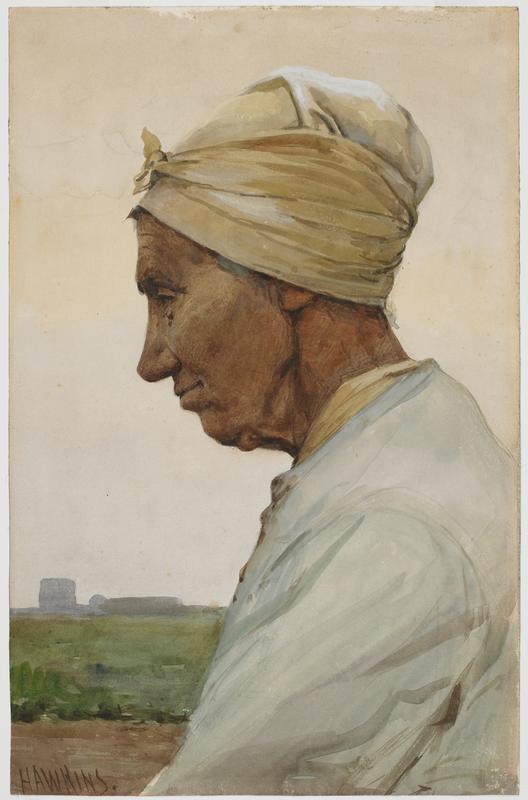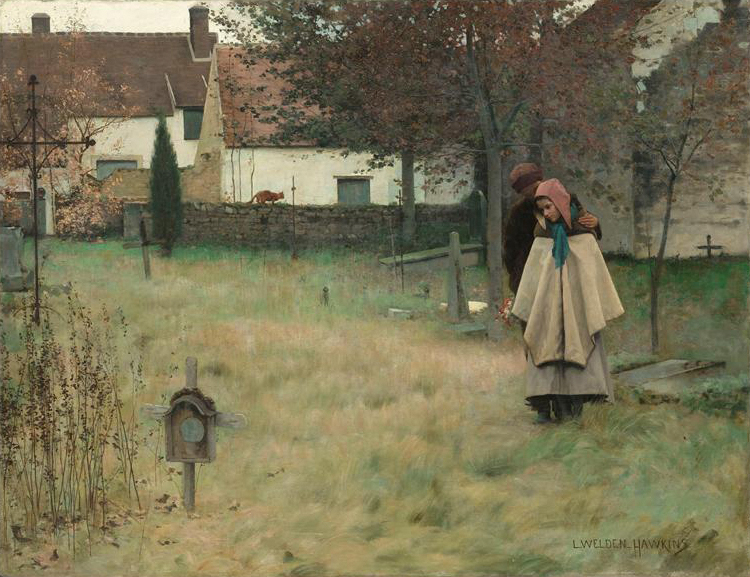
83. Louis Welden Hawkins, Peasant Woman in a Landscape
| Artist | Louis Welden Hawkins, French (born Germany), Esslingen, Baden-Württemberg, Germany 1849–Paris 1910 |
| Title, Date | Peasant Woman in a Landscape, c. 1880 |
| Medium | Watercolor and gouache |
| Dimensions | 14 7/8 × 9 5/8 in. (37.8 × 24.4 cm) |
| Inscriptions + Marks | Lower left: HAWKINS |
| Provenance | Sale, Dessins, tableaux et sculptures des XIXe et XXe siècles, Piasa, Drouot-Richelieu, Paris, April 10, 2002, no. 81; [Chantal Kiener, Paris, until 2005; to Weisberg]; Yvonne and Gabriel Weisberg, Minneapolis |
| Exhibition History | "Expanding the Boundaries: Selected Drawings from the Yvonne and Gabriel P. Weisberg Collection," Mia (2008) and Snite Museum of Art, Notre Dame, Ind. (2010); "Reflections on Reality: Drawings and Paintings from the Weisberg Collection," Mia, 2022–23 |
| References | Lisa Dickinson Michaux with Gabriel P. Weisberg, "Expanding the Boundaries: Selected Drawings from the Yvonne and Gabriel P. Weisberg Collection" (exh. cat.), Minneapolis Institute of Arts (Minneapolis, 2008), p. 48, fig. 28 |
| Credit Line | Promised gift of Gabriel P. and Yvonne M.L. Weisberg, Minneapolis |
Before he became a major figure in the symbolist movement in the 1890s and beyond, Louis Welden Hawkins had established himself as a naturalist.1 In 1881 his painting The Orphans, depicting two children in a cemetery presumably visiting their parents’ grave (fig. 1), won a bronze medal at the Salon de la Société des Artistes Français and was purchased at auction in 1887 for the Musée du Luxembourg, then France’s premier museum of contemporary art. The present watercolor, made at about the same time, has a similar somber mood, earthbound subject, and low-key tonality.

Peasant Woman in a Landscape is one of Hawkins’s innumerable watercolors, many exhibited in Paris in the mid-1880s. The artist found a ready clientele for these images, which collectors saw as portraits of workers from his hometown of Esslingen, Germany, and the nearby countryside. The dignified form of the profile portrait, whose history can be traced to ancient coinage of Roman emperors and later to Renaissance luminaries, suggests Hawkins’s respect for his sitters. Hawkins made other images of this same model, each with the meticulous attention to detail on display here.
GPW
Notes
For further information on Hawkins, see Lucas Bonekamp, Louis Welden Hawkins 1849–1910, 19th-century Masters, 2, Van Gogh Museum, Amsterdam (Zwolle, Netherlands: Waanders, 1993). ↩︎